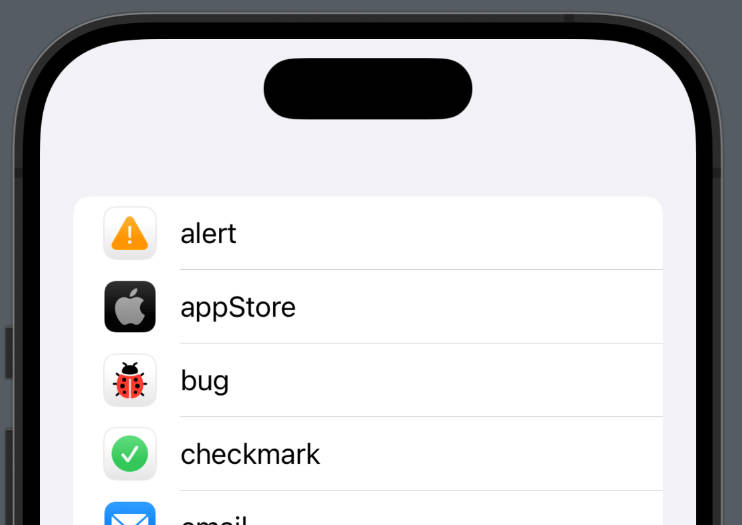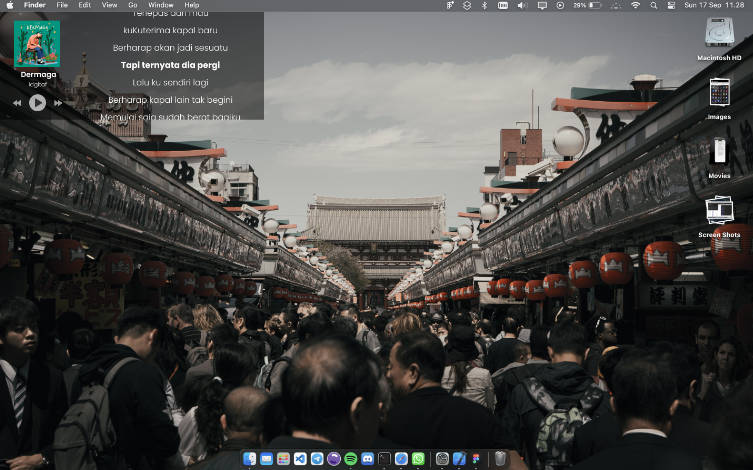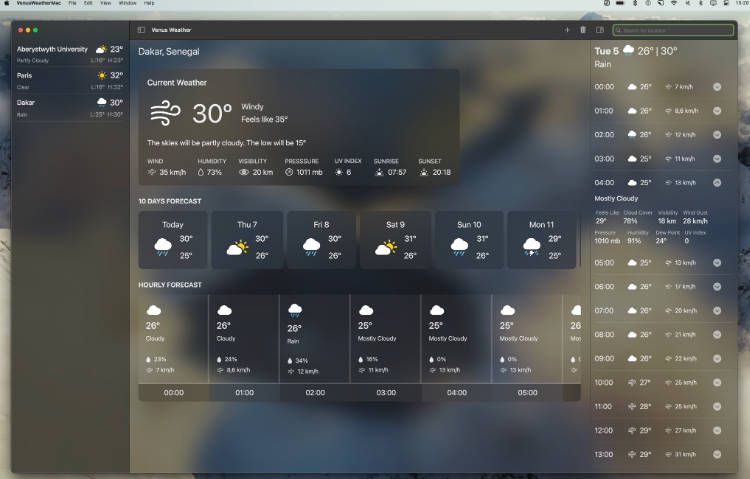Wandra
Simple Wi-Fi analyzer for macOS built in SwiftUI.
It displays your Signal to Noise Ratio and Received Signal Strength.
Basestation SSID and MAC-address, you can export measured data as
a csv file to import to Numbers/Excel.
System requirements
macOS 11.0
Download from here:
https://github.com/mikaellofgren/wandra/releases

Help
Click the textfields in the app to bring up help texts.
Signal to Noise Ratio (SNR)
Higher value is better
Its measured by taking the signal strength (RSSI)
and subtracting the noise.
Noise is all the RF around the radio in the spectrum
from all RF sources. It can come from a microwave, bluetooth devices, etc.
Wireless adapters (NIC) for laptops, tablets,
aren’t capable of determining accurate SNR.
An example is when a microwave is turned on.
The NIC will not be able to see the RF signal
because the microwave is sending unmodulated bits.
Thus the built-in NIC believes there is no noise.
Received Signal Strength Indicator (RSSI)
Measured in dBm (decibel milliwatts)
Lower value is better
Every 3 dB lower = doubles signal strength
Every 3 dB higher = halves signal strength
Usually it starts around -30 near the access point,
and gets higher (losing strength)
when moving away from the access point.
Basic Service Set Identifiers (BSSID)
Most of the time it is associated with MAC address of the access point
Stick to current BSSID until:
- RSSI below -75dBm
- Choose 5Ghz over 2.4GHz as long as 5GHz is more than -68dBm
- Does NOT support 802.11k
- Choose AP with RSSI 12dB higher than current AP
If multiple 5 GHz SSIDs meet this level,
macOS chooses a network based on these criteria:
- 802.11ax is preferred over 802.11ac.
- 802.11ac is preferred over 802.11n or 802.11a.
- 802.11n is preferred over 802.11a.
- 80 MHz channel width is preferred over 40 MHz or 20 MHz.
- 40 MHz channel width is preferred over 20 MHz.





